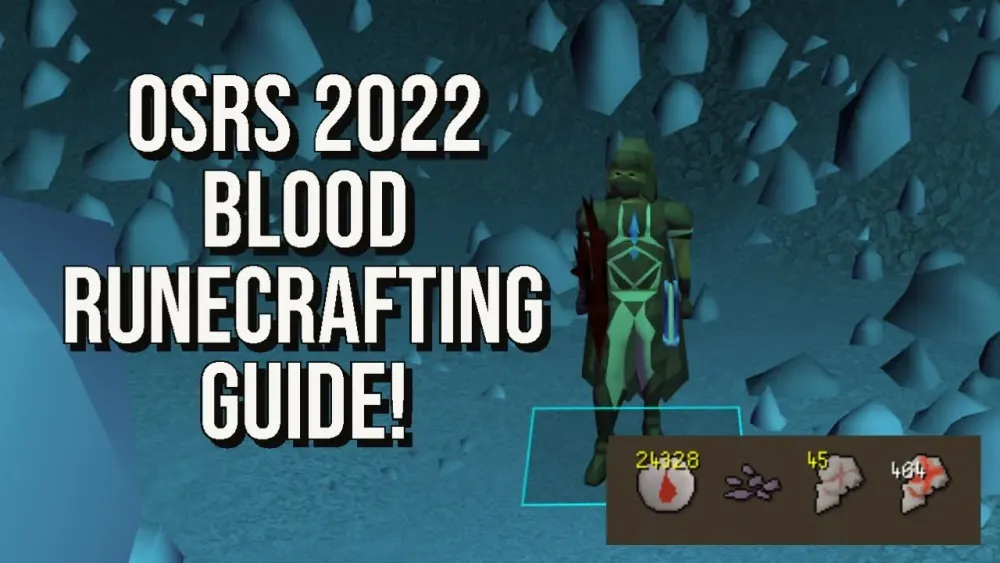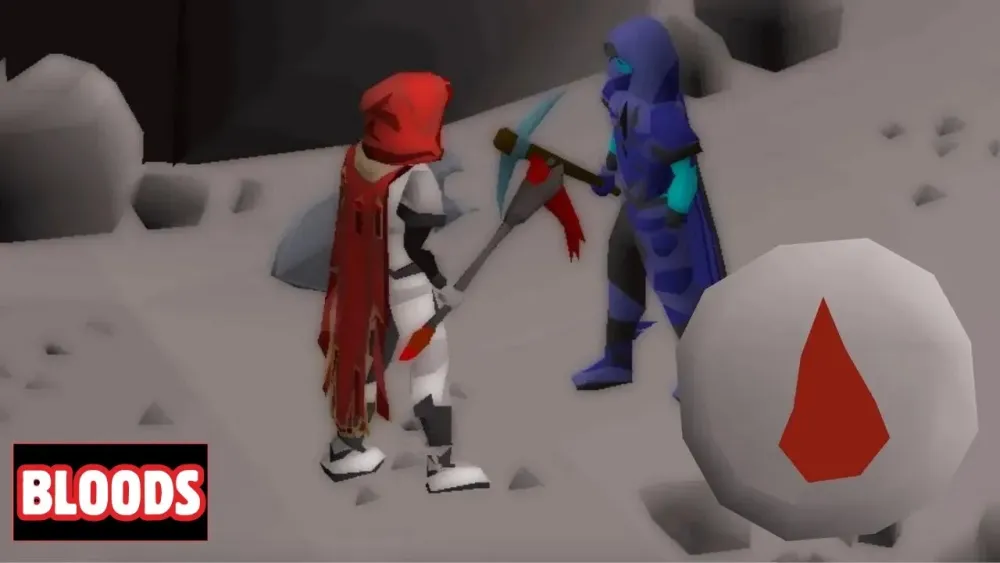Understanding the OSRS Blood Rune Price: A Comprehensive Guide

Blood runes, introduced in Old School RuneScape (OSRS), are essential for high-level magic users. They allow players to cast powerful spells, including the infamous Blood Barrage, making them a sought-after item in the game. Understanding the dynamics of blood rune prices is crucial for players looking to maximize their profit margins or efficiently manage their resources. This guide delves into the key factors that affect blood rune prices, providing insights for both casual players and dedicated merchants.
The price of blood runes in OSRS is influenced by several factors, each contributing to the supply and demand dynamics. Key elements include:
- Supply and Demand: The fundamental economic principle of supply and demand plays a significant role. If more players are crafting or acquiring blood runes, the supply increases, potentially lowering prices. Conversely, if demand surges, perhaps due to a newly popular spell or quest, prices can spike dramatically.
- Player Activity: The overall activity of high-level magic users directly impacts blood rune prices. Events, updates, or changes in the meta-game that encourage the use of high-cost spells can lead to increased demand, thus driving prices up. Monitoring player trends and community discussions can provide insights into potential price fluctuations.
- Competition: The presence of other players in the market can affect prices. If multiple players are selling blood runes, competition may lead to lower prices. On the other hand, if there are fewer sellers, prices can increase as players are willing to pay more to obtain the runes.
- Crafting Costs: Blood runes can be crafted by players using the Runecrafting skill. The costs associated with crafting, including the price of talismans, essence, and time, can influence the market price. If crafting becomes more expensive due to increased costs in materials, players may raise their selling prices to maintain profit margins.
- Updates and Changes: Game updates can significantly impact the economy. New spells, quests, or changes to existing mechanics can alter how blood runes are used, thereby affecting their demand. Keeping abreast of game updates can provide foresight into potential price shifts.
- Market Trends: Analyzing historical price trends can help predict future movements. Websites and tools that track OSRS item prices can provide valuable data for understanding how external factors influence blood rune prices over time.
In summary, blood rune prices in OSRS are not static; they fluctuate based on a variety of factors. By understanding these influences, players can make informed decisions when buying or selling blood runes, enhancing their gameplay experience and economic strategy.
3. Historical Price Trends of Blood Runes

The journey of Blood Runes in Old School RuneScape (OSRS) has been quite fascinating. From their inception to the present, the price of Blood Runes has seen significant fluctuations influenced by various in-game events, updates, and player demand. Understanding these historical price trends can provide valuable insights for players looking to capitalize on trading.
Initially, Blood Runes were relatively inexpensive as players were still discovering their utility in high-level Magic spells. However, as more players reached higher levels and began using spells like “Blood Barrage” and “Blood Blitz,” demand increased. This surge in usage pushed prices up significantly.
Here’s a quick overview of key price trends over the years:
- Early Days (2013-2015): Prices hovered around 200-300 coins.
- Rise in Demand (2016): Prices spiked to around 400-500 coins due to new players and spell usage.
- Post-Update Impact (2017-2019): With updates affecting rune crafting and magic, prices fluctuated between 400-700 coins.
- Stabilization (2020-Present): Prices have stabilized around 500-600 coins, showing signs of gradual increases during peak player activity.
Overall, the historical price trends of Blood Runes reveal a pattern of growth, influenced by player engagement and in-game changes. Staying aware of these trends can help players make informed decisions about trading and usage.
4. Where to Buy and Sell Blood Runes
Looking to buy or sell Blood Runes in OSRS? You’ve got several options! Depending on your preferences and in-game resources, you can choose between various methods to acquire or offload these valuable runes.
Here are the most popular locations and methods:
| Method | Description | Pros | Cons |
|---|---|---|---|
| Grand Exchange | The primary marketplace for trading items in OSRS. | Convenient, quick transactions, and competitive prices. | Prices can fluctuate rapidly; may face competition. |
| Direct Player Trading | Trade directly with other players in-game. | Potential for better prices; no middleman. | Requires finding a buyer/seller; risk of scams. |
| Rune Crafting | Crafting your own Blood Runes through the Rune Crafting skill. | Self-sufficient; can save money if you have the skill. | Time-consuming; requires specific levels and resources. |
In summary, whether you prefer the convenience of the Grand Exchange, direct player trading, or crafting your own, there are multiple avenues to buy and sell Blood Runes. Choose the method that best fits your playstyle and watch your inventory grow!
Strategies for Making Profits with Blood Runes
Making a profit with Blood Runes in Old School RuneScape (OSRS) can be an exciting venture. Here are some effective strategies you can implement to maximize your earnings:
- Flipping Blood Runes: Buy Blood Runes at a lower price and sell them at a higher price. Keep an eye on the Grand Exchange and set your buy and sell limits wisely. Use price tracking tools to identify trends.
- Crafting Blood Runes: If you have the required Runecrafting level (77), consider crafting Blood Runes yourself. This way, you can save on purchasing costs and increase your profits. Use the Abyss for faster access to the Blood Altar.
- Utilizing Blood Runes in Combat: Instead of just selling Blood Runes, use them in combat. They are excellent for casting powerful spells. By using the runes effectively, you can earn more from loot drops.
- Market Timing: Keep track of market fluctuations. The Blood Rune price can vary significantly based on demand due to game updates, events, and player activities. Buy when prices are low and sell when they spike.
By combining these strategies, you can not only increase your rune stock but also enhance your overall OSRS gameplay experience.
Comparing Blood Runes to Other Rune Types
Blood Runes are unique compared to other rune types in OSRS. Understanding their differences can help you make informed decisions about which runes to use or invest in. Here’s a brief comparison:
| Rune Type | Level Requirement | Primary Use | Market Demand |
|---|---|---|---|
| Blood Rune | 77 | High-level spells | High |
| Air Rune | 1 | Basic spells | Very High |
| Earth Rune | 5 | Mid-level spells | Moderate |
| Fire Rune | 10 | Mid-level spells | High |
Key Differences:
- Level Requirement: Blood Runes require a higher level to craft compared to Air and Earth Runes, making them less accessible to new players.
- Utility: Blood Runes are primarily used for high-level spells, particularly for combat, while other runes serve different spell levels.
- Market Demand: Due to their use in high-level spell casting, Blood Runes often have a higher market demand, leading to potential profit opportunities.
Understanding these differences can help you strategize your investments and spell casting choices in OSRS.
Tips for Managing Your Blood Rune Inventory
Managing your Blood Rune inventory effectively can make a significant difference in your gameplay experience in OSRS. Here are some practical tips to help you stay on top of your Blood Rune stock:
- Track Your Usage: Keep a record of how many Blood Runes you use during your activities, such as casting spells or training skills. This will help you assess your needs accurately.
- Use a Bank Organizer: Make use of your bank’s organization tools. Group your Blood Runes with other runes to easily locate them when needed.
- Set a Threshold: Determine a minimum number of Blood Runes you want to keep in your inventory. When you hit that threshold, it’s time to restock.
- Diversify Your Sources: Blood Runes can be obtained through various methods like crafting, purchasing from other players, or killing specific monsters. Explore these options to find the most efficient way to stock up.
- Monitor Market Trends: Keep an eye on the Grand Exchange prices. If the price is low, consider buying in bulk. If it’s high, think about selling your excess stock to profit.
By implementing these tips, you can ensure that you always have enough Blood Runes to meet your needs without overcommitting resources to them.
Conclusion: Future Outlook for Blood Rune Prices
The future of Blood Rune prices in OSRS can be influenced by several factors, and understanding these can help players make informed decisions about buying and selling.
Here are some elements that could affect Blood Rune prices moving forward:
| Factor | Impact |
|---|---|
| Game Updates | New spells or content could increase demand. |
| Player Trends | Changes in player strategies can lead to fluctuations in usage. |
| Market Speculation | Players buying and selling based on predictions can cause volatility. |
| Supply Limitations | Reduced access to Blood Runes could drive prices up. |
In conclusion, keeping an eye on these factors and staying engaged with the OSRS community can provide valuable insights into future Blood Rune price trends. Whether you’re a regular user or a trader, being proactive can help you navigate the ever-changing economy of OSRS effectively.
